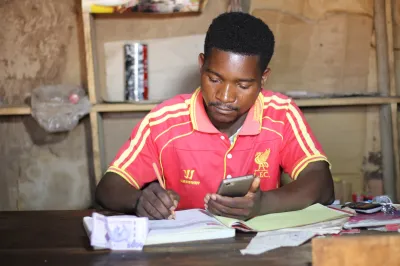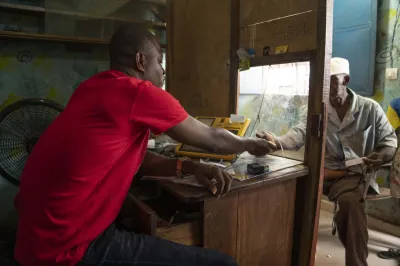A Trip Around the Corner: Financial Inclusion in the U.S.
Here at CGAP we love to draw global lessons about financial inclusion from our interaction with stakeholders in various countries. We get excited when we see something from an MNO’s agent strategy in Colombia which can provide insight to a non-bank e-money issuer in Burkina Faso. We hope that our counterparts find this global perspective useful since it is far too easy to get so focused on one’s own market that one can’t see anything beyond it.
But we often neglect learning from the latest innovations in the developed world since we assume that the differences between these countries and the ones we are most interested in are too great. But are they really more extreme than Colombia and Burkina Faso?
Last year, a few of us attended the annual Underbanked Financial Services Forum organized by the Center for Financial Services Innovation (CFSI), the leading authority on financial services for underbanked consumers in the U.S. We gained useful insights for our own work internationally, which we blogged about here, and returned again this year to learn about the latest innovations in the U.S. market. Many of the emerging trends from last year were reinforced this year. But a few things are worth noting.
Big focus on encouraging savings through behaviorally-informed product design. In research conducted by the Doorways to Dreams Fund, 46% of Americans weren’t confident they could access $2,000 if an immediate need arose. 24% of all U.S. households have no debit or credit cards and 106 million American are “cash preferred”. There are many businesses that are trying to change the savings behavior of Americans. Many of you will already be familiar with Piggymojo, whose tagline is to change impulse buying into impulse saving. How do they do this? Well imagine you decide to pass up a taxi and take the metro instead, thereby saving $10. You text “saved $10, passed up taxi” to the Piggymojo platform, which then sends this text to your “savings buddy” (spouse, friend, etc.), transfer s$10 into your savings account, and sends you a text with the amount remaining to reach your weekly savings goal. Another start-up called SaveUp is a free rewards program that rewards customers for increasing their savings and reducing their debt. Savings behavior earns credit which can be used to play for prizes for things from electronics, to trips, to cash. One of the crowd pleasers was Juntos Finanzas, which has designed an SMS-based personal financial management tools for low-income, cash-based Americans. Juntos helps low-income clients track expenses and set savings goals. Over a 6-month trial, alpha testers with household incomes between $23,000-$39,000 saved on average $1,400 each. Read the Reuters article about Juntos winning the Core Underbanked Innovators Challenge at the conference.
Continued skepticism and confusion around the role that mobile phones will play. The U.S. market is still divided about the role, if any, mobile phones will play in bringing financial access to the underbanked. While last year the mobile conversation tended to focus on NFC, this year it focused on the increasingly prevalence of smart phones among the underbanked. 48% of adults in the U.S. have a smart phone, of which 35% are on a prepaid service. In contrast to developing markets, providers in the U.S. don’t struggle nearly as much with building a distribution network. The U.S. mobile wallet company Wipit has 10,000 locations for loading cash into one’s wallet, which is a huge amount by any international standard. But the level of discussion and intellectual curiosity about the role of mobile technology from conference attendees was surprisingly low. Many people seemed to be waiting for one of the new mobile wallet solutions to emerge as the winner. What was less clear, at least to me, was why people weren’t satisfied with multiple products competing against each other in the meantime.
Convergence of focus (and terminology) on product innovation based on consumer insights. It appears that the jargon we are increasingly using in our own work like design thinking, rapid prototyping and product incubation is also being used in the U.S. as providers focus on these strategies to target the underbanked. Even large corporations like Citi are challenging themselves to “to build the bank that lives the speed of life.”
Finally, there was some exciting chatter about the use of social media as an alternative data source. But this is such an interesting topic that it really deserves its own post. More on this to come.
Topic: Digital Innovation
Sub-topics: Payments




Add new comment